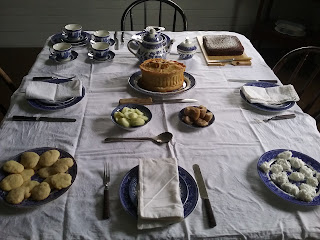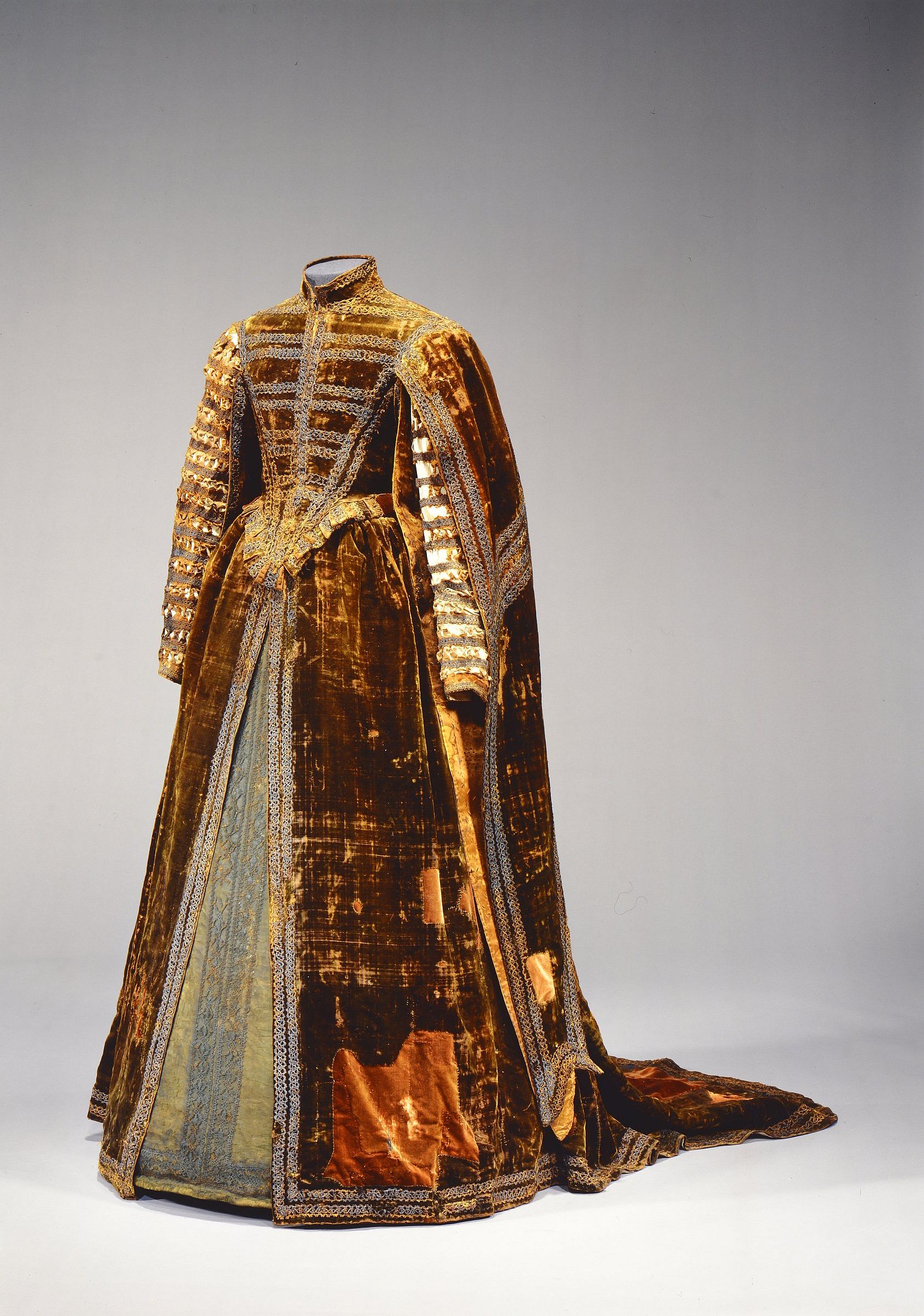The Challenge: Fear Factor. Try making a dish with an ingredient, technique, or
other element goes a little outside your comfort zone (including an era
or cuisine you're less familiar with). Or make a recipe with a spooky
name.
The Recipe: Deviled Biscuits from Maria Rundell's A New System of Domestic Cookery
Devilled Biscuits--Butter captain's biscuits on both sides, and pepper them well; make a slice of cheese into a paste with made mustard, and lay it on upon one side; sprinkle cayenne pepper on the top, and send them to be grilled. This may be varied by the addition of chopped anchovies, or the essence diavolo paste, or Chetney.
The Date/Year and Region: 1844, Philadelphia
How Did You Make It: I started with the Captain's Biscuit, which posed a problem in that there appear to be at least two different versions of this item: one thin and hard (possibly like a cracker or hardtack) and the other a bit thicker and able to be split for serving. The Complete Biscuit and Gingerbread Baker's Assistant (1854) was particularly useful for spelling this out, though as its instructions are given for professional kitchens, I decided to instead follow the recipe in Cassell's Dictionary of Cookery (1896), which is better suited for me to make at home on a small scale: Captain's Biscuits.--Put a pinch of salt with as much flour as may be required, and make it into a paste with a little new milk. Knead it thoroughly till it is firm and stiff, then divide it into balls, and form into cakes about a quarter of an inch in thickness. Prick them with a fork, and bake for about fifteen minutes.
For this, I used 1 cup of all-purpose flour, added a sprinkle of salt (<1/8 tsp), and then just enough milk to make the dough (1/3 cup). I kneaded this by hand, divided it into six pieces, rolled each into a ball, and then flattened them; despite aiming for 1/4", the biscuits ended up in the 1/4"-1/2" range. I baked these the suggested 15 minutes 350F, and let biscuits cool.
I then buttered and sprinkled pepper on both sides of each biscuit. I cut one piece of cheese per biscuit and crushed/mixed each with some mustard. I applied the cheese to the biscuits, sprinkled cayenne over the whole, and put them back in the over for another 5 minutes at 400F.
The
type of cheese wasn't specified, so I ended up grabbing all the
left-overs from craft night, and make one biscuit with each of: white cheddar, brie, tuscano with black pepper, rosemary asiago, smoked gouda, and double gloucester with chives. I also used
some leftover modern (from a can) basic biscuits to test whether this
recipe works better with a thick biscuit than a thinner one. It's not a
true thick captain's biscuit, but I thought it would be a useful point
of comparison in case I decide to make these again. Also, melted cheese
on bread is delicious in general.
Time to Complete: A couple hours, since I was waiting for the biscuits I baked to cool. If one had left-over biscuits and an already-hot oven, I'd put it at closer to 5 minutes prep and 5-10 cooking time.
Total Cost: About $2, though it's hard to say at this small of scale.
How Successful Was It? The homemade biscuits were edible, just a bit bland, and also not quite crisp. I think I need to get them much thinner (truly 1/4" or less) and also probably cook them at a higher temperature. A touch more salt might be nice, too. I erred low on the temperature since I knew they'd be getting cooked twice, but I wouldn't go that route again. The ready-mades had a lot more flavor (butter and salt), but also felt like they needed to be crispier, so I think the second bake-standing-in-for-grilling should also be done at more of a broil. I went 400F this time because I was leaning that way, but I think it needs either to go up to 425F and/or to go more than 5 minutes. Maybe I'll try 10 at 400F next time.
All of the cheeses ended up edible, despite my misgivings. Not all of them mashed well or melted nicely, and some imparted more of their own flavor than others. I also ended up using more mustard in some, which meant some tasted like mustard other more like the cheese, and a combination of the two. The gloucester mashed easiest of all and also melted nicely; perhaps because of this, I used a little less mustard and the biscuit tasted mostly of the cheese. The brie also mashed and melted fairly well, and had a mellower taste, which made the mustard more prominent. The smoked gouda was hard to work with, but some of the smokey flavor came through, which was very tasty. Both the tuscano and asiago cheeses were pretty low-key, and blended well into the overall biscuit, even with their extra flavoring agents. The cheddar was perfectly serviceable and melted ok; it was the one I had assumed would work best, but compared to the others it didn't stand out taste-wise. Overall, I'd rate this as another yummy Welsh-rarebit-type recipe, but something about the cracker base makes it seem like a fancy finger food, which could be useful.
How Accurate Is It? The grilling step in the major change: I had to switch to broiling, which honestly ended up more like baking. The ship's biscuits were not the hardtack disaster I expected, and with some practice I think they could get quite serviceable for when I want to make a more accurate deviled biscuit. I've already explained the cheese and biscuits, which were more experiments than not. For the made mustard, I used a plain yellow prepared mustard.
 |
Not all the cheeses mashed easily.
|
 |
Devilled Biscuits.
|







